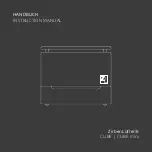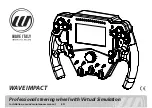
App - 26 App - 26
MELSEC-Q
APPENDIX
Appendix 7 Details of Communication Control
Appendix 7.1 DC1/DC3 Control
The following diagram shows the data flow when the DC1/DC3 control is enabled in
the communication channel.
Appendix 7.1.1 DC1/DC3 transmission control enabled
When the DC1/DC3 control is enabled, DC1/DC3 control signals are sent to an
external device based on the size of the free area in the receive buffer specified by the
user, allowing the data transmission from the external device to the communication
module to be controlled and requested.
A DC3 control signal is sent to the external device when the free area in the receive
buffer becomes one-fourth or less of the total space as data received from the external
device is stored.
A DC1 control signal is sent to the external device when the free area in the receive
buffer becomes three-fourths or more of the total space because of receive requests
from the BASIC program in the communication module.
(BASIC program)
ZOPEN • • • •
ZRECEIVE • • • •
Data
reception result
ZRECEIVE • • • •
Data
reception result
Data
reception result
ZRECEIVE • • • •
Communication module
Channel open 1
Receive buffer
(OS)
2
External device
DC3 control signal
DC1 control signal
The free area is
one-fourth or less.
Data
Data
A
D51H
The free area is
one-fourth or less.
1 A DC1 control signal is not sent to the external device when the communication channel is opened. The
status of the receive buffer is the same as when the DC1 control signal is sent, however.
2 After a DC3 control signal is sent, the received data is stored in the receive buffer until the free area in the
receive buffer runs out.
In order to enable the DC1/DC3 transmission control, specify 1 or higher for the receive
buffer specification when opening the communication channel.
















































